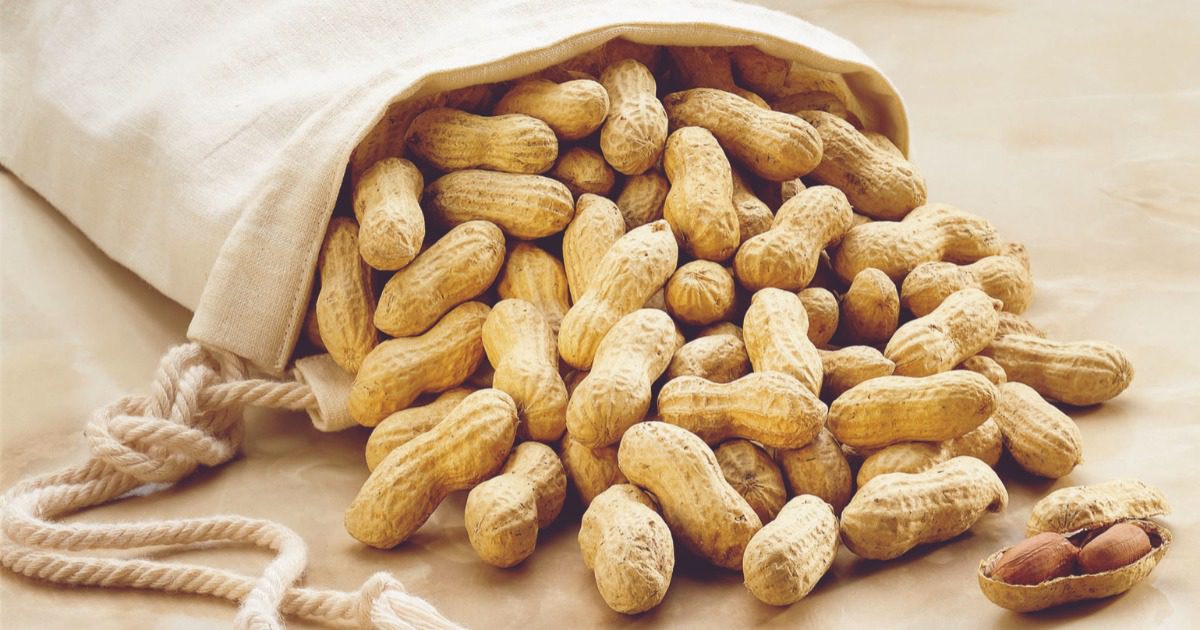Peanuts (Arachis hypogaea) are actually not nuts at all. They’re legumes, from the family Leguminosae, which includes lima beans, fava beans, soybeans, and most any bean you’ve ever eaten.
A peanut just dug from the soil is as damp as a potato and has the aroma of freshly mown hay. Shell it and chew the seed kernels, and you’ll be introduced to a slightly sweet and grassy flavor like that of a raw lima bean or sweet english pea. It’s a taste of late summer and early fall—the time when peanuts are harvested in South Carolina.
They are super flavorful before you roast them, which is why the boiled version is so popular in certain parts of South. (That peanut-buttery, nutty flavor comes from the high temperatures used when roasting.)
Archaeologists have found figurines of peanut vendors in the graves of the Moche people (200 B.C. to A.D. 700) in Peru, where the plant likely originated. The peanut eventually made its way from ancient Peru to Brazil, and from there Portuguese explorers took them to Europe, Africa, and to Asia in the fifteenth and sixteenth centuries. The peanuts made their way to North America relatively recently, coming from Africa during the trade of enslaved people in the eighteenth and early nineteenth centuries.

Picking the Perfect Peanuts
Peanut varieties commonly grown commercially in the US include Valencia, Virginia, Runner, and Spanish, and the latter three are what are most often used in making peanut spreads, candies, and oils.
The Virginia, big, pale, and fat, with two kernels inside the shell, are the classic ballpark roasted peanut.
The tastier Valencia is prized in the Lowcountry for boiling. It’s smaller, with purply-red skins and higher sugar content, and often boasts three or even four kernels per pod. Alas, the fast-ripening Valencia is less productive than the other varieties and wasn’t grown very often in the Palmetto State.
The Valencia variety is a peanut packed with a dense and earthy flavor. They come out of the shell with a deep red color, like that of a pinto bean. Peanut fever has been running high. This year, for example, Josh Johnson of Old Tyme Bean Co. in South Carolina stepped in to meet the regional demand when the New Mexico supply ran out last March in the Lowcountry.
From Virginia to Georgia and all points in between, peanuts are in season, thanks to the local farmers that produce them. Standing in the driveway or backyard around a kettle of hot boiling nuts pairs well with the cool breeze that fall brings. Wherever you land in the South, use this season to find some locally grown peanuts, especially if you’re able to locate the superlative Valencia legumes.
share
trending content
-
Outdoor Adventure and Historic Charm Awaits in St. Martin Parish
by TLP's Partners -
6 Things to Do Beyond Golf in Pinehurst
by TLP's Partners -
Charlottesville, Virginia Named Wine Region of the Year
-
A New Home for Lazy Betty
by Lia Picard -
Will Travel for Southern Food
by TLP Editors
More From Key Ingredient
-
Key Ingredient: Preserved Lemons
-
Key Ingredient: How Do You N’duja?
-
In Season: Persimmons
-
Key Ingredient: No Small Peanuts
-
Key Ingredient: Barbecue Pickled Cabbage





